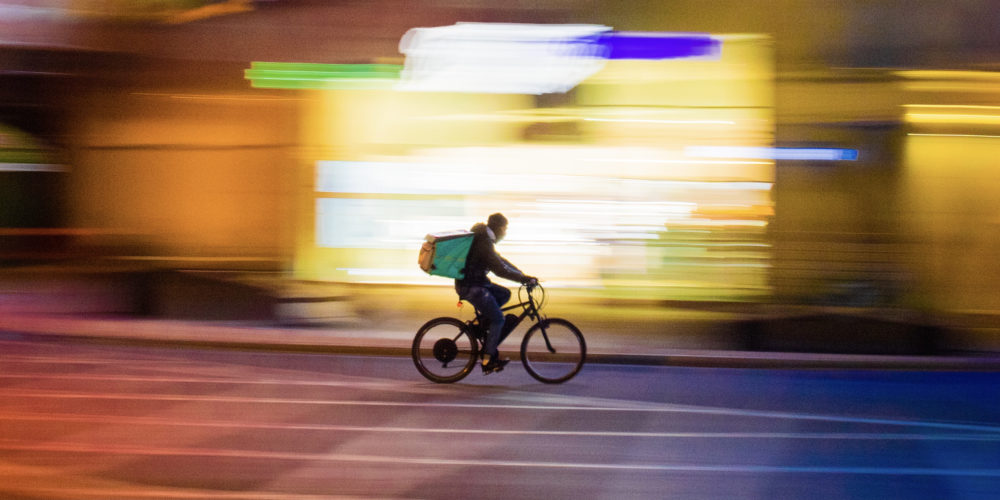A misadventure in home food delivery—and some business lessons

The alarm bell rang in my head, but I did it anyway.
I was trying to order dinner using a home delivery app, from one of my regular, favourite restaurants. For some reason the app was showing “restaurant not available” on that day. We decided to call the restaurant directly, to ask what was wrong. The reason turned out to be a very Kenyan one: “We don’t have internet today.”
I asked the obvious question, which was: “Given the volume of home delivery orders these days through various apps, don’t you have backup for when the internet is down?” “Um, no,” was the answer. “But wait,” they said, “can we take your order directly and send it with our own rider?”
That’s when I should have said no. If restaurants knew how to do seamless home delivery, they would have done it long before delivery apps appeared on the scene. But I really like a few dishes on this particular eatery’s menu, so I was seduced. We’ll make the food in 30 minutes, they said, and our guy will bring it to you in another 15. Game on?
I think you know what happened next. An hour later I was calling to ask where the food was. They were still trying to “find” their rider. 90 minutes after order they confirmed the rider was on his way. Two hours in, they said they were surprised the food hadn’t arrived, because the bike left ages back. Two hours ten minutes, they reported that the rider was not answering his phone. The restaurant owner now had to get involved, and the food finally arrived. The rider claimed he had been given the wrong order, hence the delay.
Quite an evening. But as always with these things, a couple of big lessons will emerge for the reflective person.
First, I would ask you to marvel at the conveniences introduced by platform businesses in our lives. The likes of UberEats and DoorDash and Grubhub in food—and Uber in transportation, Amazon in retail, AirBNB in accommodation—have pulled off something pretty astonishing. More and more of us are ordering and booking stuff online on our phones, for a very simple reason: it’s so very, very easy to do.
The stroke of genius is that food delivery apps don’t own any restaurants; and they don’t hire any riders. They simply sit in the middle and get everything organized. It’s quite the logistical feat: they are able to combine customers with restaurants and riders, using apps and algorithms and incentives, in ways that would have beggared belief a decade ago. Errors of course happen—how can they not, when coordinating human beings—but they are generally infrequent and inconsequential. Most of us are in, and in to stay.
A restaurant, on the other hand, finds it very difficult to set up a food delivery chain, hire riders, introduce process controls, and create incentives. That’s why my food arrived woefully late that day, compared with all the other times I have ordered it using an app. Most restaurants have little choice but to sign on with delivery apps. They have to cough up the commission, because the apps have revolutionised home delivery and turned it into a major part of the restaurant trade.
The two-taps-and-done world is now everyone’s world. That’s the benchmark. Convenient apps have transformed not just food, but entertainment, commerce, media, banking, and many more industries. So if you are still stuck in old-world analogue plays and facing digital platform disruptors, and can’t beat ‘em—well guess what, you’ll have to join ‘em. You’ll have to get enrolled in their world under their rules.
Lots to think about. The convenience bar has been raised very high, and we can’t keep ducking it.
But wait, there was a second lesson hidden in there. Did you spot it? Despite my reservations, I still proceeded to order, expecting an inefficient delivery. And I still continue to order from that restaurant (but only when they have internet!) even though they are often forgetful and full of silly lapses.
Why would I do that? Because of the taste. I’ll say it again: every business has it’s one thing, the thing it must do well in order to succeed. For food businesses, it’s the taste. If you get the food wonderfully right, you will be forgiven many other things. That’s why people patronise restaurants with bad service, in weird locations, with zero atmosphere—because the food is special. But if the taste is mediocre at best, you are cooked. Any problem in any other part of the business—service, speed, convenience, ambience—will see you dumped, often forever.
A caveat applies. The food doesn’t always have to be objectively good, nor does it have to be good for everyone. The consumption of food is highly emotion driven. We don’t just consume the food, we consume a whole bunch of feelings as well: comforting flavours, childhood memories, keeping up with peers. A great restaurateur has a core of customers glued to their food—by the feelings evoked by the tastes.
Convenience really matters these days. But an emotional connection with your customers? That’s priceless.
(Sunday Nation, 30 July 2023)

Buy Sunny Bindra's new book
The X in CX
here »
Popular Posts
- The pause that saves usJune 8, 2025
- Where are you rushing to—your funeral?June 29, 2025
- How to spot a real thinkerJune 15, 2025
- Built the app, forgot the flowJune 22, 2025
- The first push is the hardestJune 1, 2025















